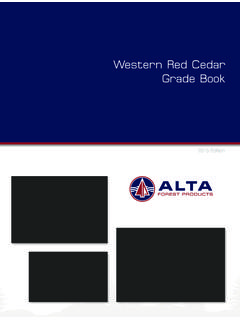Transcription of GYMNOSPORANGIUM RUSTS: COMMON CEDAR …
1 Dr. Sharon M. Douglas Department of Plant Pathology and Ecology The connecticut Agricultural Experiment Station 123 Huntington Street, P. O. Box 1106 New Haven, CT 06504 Phone: (203) 974-8601 Fax: (203) 974-8502 Founded in 1875 Email: Putting science to work for society Website: GYMNOSPORANGIUM RUSTS: COMMON CEDAR RUST DISEASES IN connecticut Although there are over 40 species of GYMNOSPORANGIUM rusts in North America, three species are significant throughout connecticut and New England. These are CEDAR -Apple Rust ( GYMNOSPORANGIUM juniperi-virginianae), CEDAR -Hawthorn Rust ( GYMNOSPORANGIUM globosum), and CEDAR -Quince Rust ( GYMNOSPORANGIUM clavipes). These rust fungi are heteroecious, meaning that they require two different hosts to complete their life cycles.
2 The primary hosts are members of the Rosaceae. On these hosts, infections appear as colorful spots on leaves, which is often followed by premature leaf drop. Swellings of midveins, petioles, and twigs, and distortion or dieback of infected twigs can also occur. Fruit can sometimes be distorted. The alternate hosts are evergreens in the genus Juniperus. Symptoms on these hosts appear as galls, swellings, witches -brooms, and twig and branch dieback. These fungi are indigenous and widespread throughout the Northeast, especially in areas where both hosts grow in close proximity. In 2009, a non-native GYMNOSPORANGIUM rust, Japanese Apple Rust, GYMNOSPORANGIUM yamadae, was detected on apple and crabapple in connecticut , as well as Maryland, New Jersey, New York, and Pennsylvania.
3 It is thought that this pathogen has probably gone undetected for many years because it may have been confused with CEDAR -Hawthorn Rust, which has very similar symptoms. CEDAR -APPLE RUST CEDAR -apple rust is caused by the fungus GYMNOSPORANGIUM juniperi-virginianae. The primary hosts are species of Malus-- apple (M. domestica) and crabapple (M. sylvestris and other Malus species). The alternate hosts are members of the genus Juniperus, which includes the native Eastern red CEDAR (J. virginiana) as well as many ornamental junipers ( , Chinese, low, and creeping junipers). The symptoms of CEDAR -apple rust disease on Eastern red CEDAR and other junipers are inconspicuous during the winter and appear as brown, kidney-shaped galls that vary in size from -2 inches in diameter (Figure 1).
4 As the temperatures begin to rise in the spring, the fungus begins to grow in the galls (Figure 2). After these conditions, spectacular and distinctive bright orange, gelatinous telial (spore) horns develop and protrude from the surface of these galls (Figure 3). Telia can be up to four inches long. Heavily infected junipers appear to be decorated with many colorful galls GYMNOSPORANGIUM Rusts: COMMON CEDAR Rust Diseases in connecticut S. M. Douglas The connecticut Agricultural Experiment Station ( ) 2 Figure 1. Dormant CEDAR -apple rust gall overwintering on Eastern red CEDAR . Figure 2. Gall with telial horns beginning to emerge in early to mid-spring. Figure 3. Spectacular, gelatinous telial horns develop from galls after rain.
5 (Figure 4). Galls can result in dieback of twigs. Figure 4. Eastern red CEDAR decorated with many galls in spring. Spores called teliospores are produced in the gelatinous spore horns or tendrils. When the teliospores germinate, they produce another type of tiny spore called a basidiospore. These spores can only infect apple and crabapple. Basidiospores are released and carried by wind and driving rain to newly emerging leaves of the alternate hosts, apple and crabapple. As many as million basidiospores may be produced in a single gall. These spores have been shown to be carried as far as six miles, but most infections occur within several hundred feet from the source. Once the spores land on the emerging apple or crabapple leaves, they germinate and infect the leaves when they are wet.
6 Symptoms of infection on the apple and crabapple hosts are also quite colorful. Lesions first appear in early June as greenish-yellow spots that increase in size. GYMNOSPORANGIUM Rusts: COMMON CEDAR Rust Diseases in connecticut S. M. Douglas The connecticut Agricultural Experiment Station ( ) 3 Figure 5. Symptoms of CEDAR -apple rust on red-pigmented crabapple (upper leaf surface). Figure 6. Symptoms on the upper surface of an apple leaf. Figure 7. Close-up of rust lesion. They develop into characteristically brightly colored spots--the color can vary from yellowish-orange to red, depending upon the apple or crabapple cultivar (Figures 5, 6, and 7). Symptoms are visible on both the upper and lower leaf surfaces.
7 Symptoms can develop on fruit and rarely on twigs. By midsummer, minute aecia about 1/8 inch long (also called spore cups ) develop at the edge of the lesions on the lower leaf surfaces (Figures 8 and 9). Figure 8. Aecia present in the rust lesion on the lower leaf surface. Figure 9. Close-up of short, cylindrical aecia. The spores produced in these cups are called aeciospores. These one-celled spores are released from midsummer into autumn. GYMNOSPORANGIUM Rusts: COMMON CEDAR Rust Diseases in connecticut S. M. Douglas The connecticut Agricultural Experiment Station ( ) 4 Aeciospores can only infect junipers and cannot infect other apples or crabapples. These spores are dry and are carried by wind back to the juniper and red CEDAR hosts.
8 When the spores land, they germinate and stimulate the formation of galls. Galls are initially green to greenish-brown and gradually darken to brown and enlarge as they age. This initiates another cycle of disease. It takes from 19-22 months to complete one life cycle of this fungus. CEDAR -HAWTHORN RUST CEDAR -hawthorn rust is caused by GYMNOSPORANGIUM globosum and is very similar to CEDAR -apple rust. However, its primary host range is larger than for CEDAR -apple rust. The most COMMON hosts are apple, crabapple, and Crataegus (hawthorn). Occasional hosts include Amelanchier (serviceberry), Cydonia (quince), Pyrus (pear), and Sorbus (mountain ash). The alternate hosts are in the genus Juniperus, which includes the native Eastern red CEDAR (J. virginiana) as well as many ornamental junipers ( , Chinese, low, creeping, and savin junipers).
9 Symptoms of CEDAR -hawthorn rust disease on Eastern red CEDAR and other junipers are often inconspicuous, especially during winter. They are small brown galls from 1/8-9/16 inch in diameter (Figure 10), and can appear flattened on the side attached to the twig. As the temperatures rise in the spring, the fungus begins to grow in the galls. After periods of moisture, bright orange, gelatinous spore horns protrude from the surface of the galls (Figures 11 and 12). They are typically much smaller and less spectacular than those produced in CEDAR -apple rust and rarely cause twig dieback. Teliospores are produced in the spore horns. They germinate and produce tiny basidiospores (Figures 13 and 14). Figure 10. Dormant CEDAR -hawthorn gall on juniper. Figure 11. Small telial horns protruding from a small gall on the stem.
10 Figure 12. CEDAR -hawthorn galls in spring. Basidiospores are released and carried by wind and driving rain to newly emerging GYMNOSPORANGIUM Rusts: COMMON CEDAR Rust Diseases in connecticut S. M. Douglas The connecticut Agricultural Experiment Station ( ) 5 leaves of the alternate hosts, apples, crabapples, hawthorns, and others. Millions of basidiospores are carried distances as far as fourteen miles, but most infections occur within several hundred feet from the source. CEDAR -hawthorn rust galls often produce spores for more than one year, unlike the CEDAR -apple rust galls, which only produce spores for one season. Once the basidiospores land on emerging apple or crabapple leaves, they germinate and infect the leaves when they are wet.
















